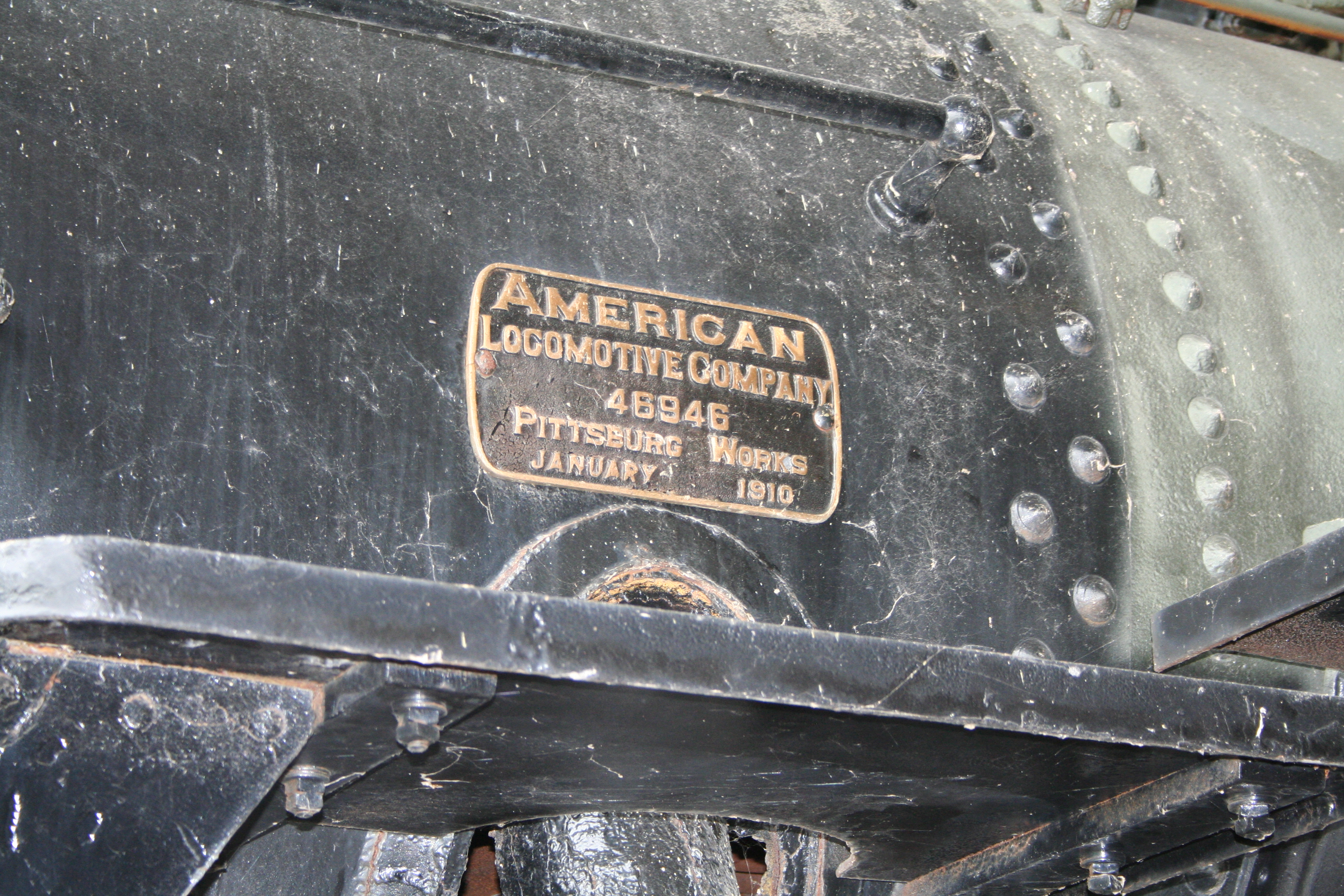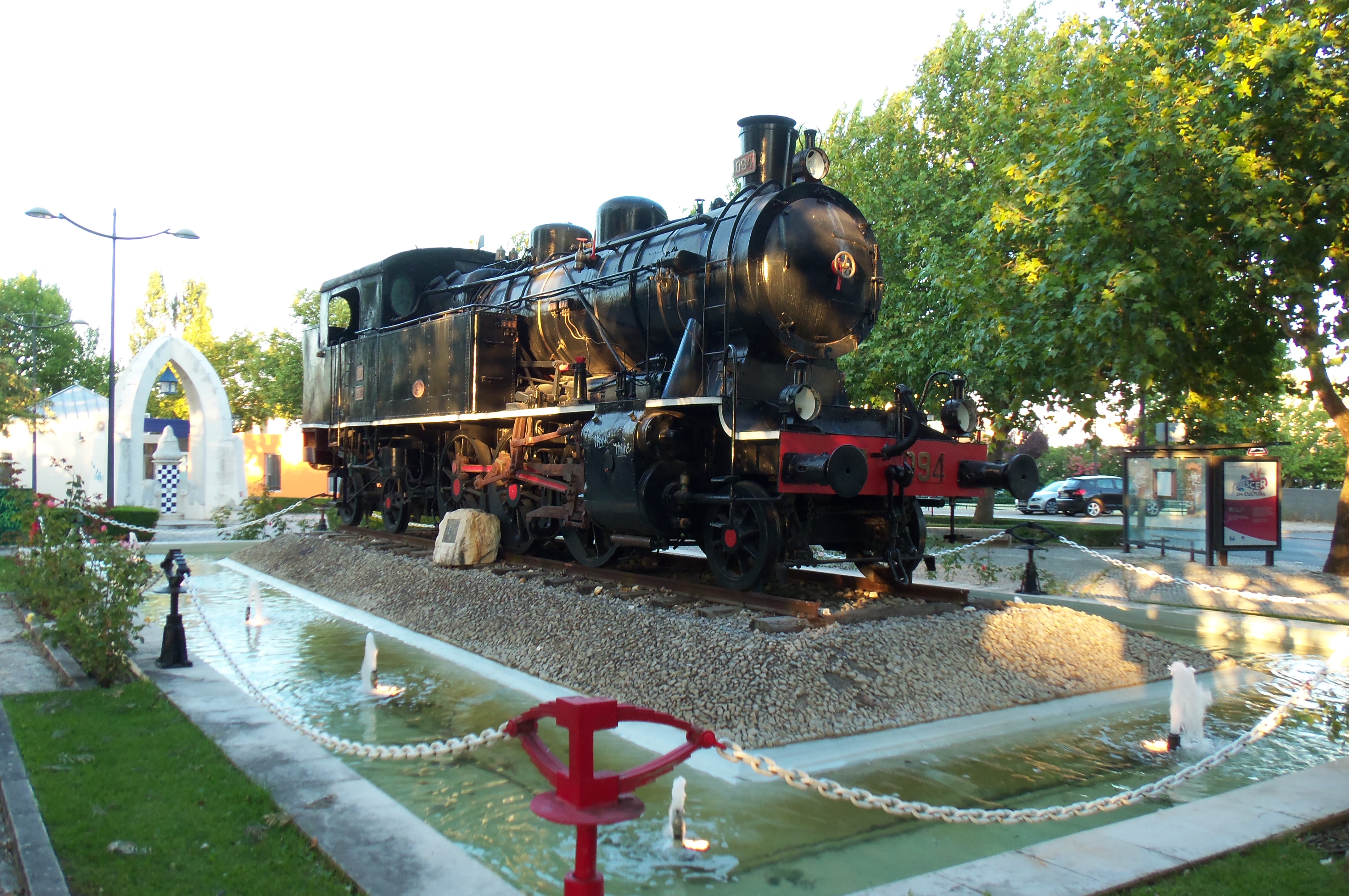|
CP Class 1500
The Série 1500 of the Portuguese Railways were introduced in 1948, making them amongst the first main line diesel locomotives to be used in Europe. These 12 locomotives were built in the United States by ALCO, to the constructor's type RSC-2 specification. The locomotives were purchased with assistance from Marshall Aid funds in an attempt to cut the railway's running costs, modernise the system and help alleviate Portugal's shortage of coal following World War II. They remained in service with CP until approximately 2000. 64 years after construction (as of 2012), some still survive with private operators and one locomotive is preserved at Portugal's National Railway Museum at Entroncamento. References * ''This article's was originally based on the equivalent article on the Portuguese language Wikipedia'' {{Rolling stock of Portugal Diesel-electric locomotives of Portugal Railway locomotives introduced in 1948 ALCO locomotives A1A-A1A locomotives ... [...More Info...] [...Related Items...] OR: [Wikipedia] [Google] [Baidu] |
American Locomotive Company
The American Locomotive Company (often shortened to ALCO, ALCo or Alco) was an American manufacturer of locomotives, diesel generators, steel, and tanks that operated from 1901 to 1969. The company was formed by the merger of seven smaller locomotive manufacturers and Schenectady Locomotive Works, Schenectady Locomotive Engine Manufactory of Schenectady, New York. A subsidiary, American Locomotive Automobile Company, designed and manufactured automobiles under the Alco brand from 1905 to 1913. ALCO also produced nuclear reactors from 1954 to 1962. The company changed its name to Alco Products, Incorporated in 1955. In 1964, the Worthington Corporation acquired the company. The company went out of business in 1969. The ALCO name is currently being used by Fairbanks-Morse, Fairbanks Morse Engine for their FM, ALCO line. Foundation and early history The company was created in 1901 from the merger of seven smaller locomotive manufacturers with Schenectady Locomotive Works, Schenect ... [...More Info...] [...Related Items...] OR: [Wikipedia] [Google] [Baidu] |
ALCO RSC-2
The ALCO RSC-2 was a diesel-electric locomotive that rode on three-axle trucks, having an A1A-A1A wheel arrangement. 91 locomotives were produced — Used in much the same manner as its four-axle counterpart, the ALCO RS-2, though the wheel arrangement lowered the axle load for operation on light rail such as are found on branch lines. The Milwaukee Road was the first railroad to take delivery of the RSC-2, initially assigning them to their Valley Division (headquartered near Wausau, Wisconsin) in November 1946. This was done in order to study the effects of an all-diesel roster (i.e. no steam locomotives available as a backup). The experiment was deemed a success and soon all steam locomotives were gone from the Valley Division. RSC-2s would faithfully serve the Milwaukee Road for many years, until being replaced in turn by the EMD SDL39. ALCO also exported these units to the state railway of Portugal, where Portuguese Railways (CP) designated them Série 1500. These locomo ... [...More Info...] [...Related Items...] OR: [Wikipedia] [Google] [Baidu] |
A1A-A1A
The AAR wheel arrangement system is a method of classifying locomotive (or unit) wheel arrangements that was developed by the Association of American Railroads. Essentially a simplification of the European UIC classification, it is widely used in North America to describe diesel and electric locomotives (including third-rail electric locomotives). It is not used for steam locomotives, which use the Whyte notation instead. The AAR system counts axles instead of wheels. Letters refer to powered axles, and numbers to unpowered (or idler) axles. "A" refers to one powered axle, "B" to two powered axles in a row, "C" to three powered axles in a row, and "D" to four powered axles in a row. "1" refers to one idler axle, and "2" to two idler axles in a row. A dash ("–") separates trucks or wheel assemblies. A plus sign ("+") refers to articulation, either by connecting bogies with span bolsters or by connecting individual locomotives via solid drawbars instead of couplers. 1A-A1 "1A-A1" ... [...More Info...] [...Related Items...] OR: [Wikipedia] [Google] [Baidu] |
Bo-Bo
B-B and Bo-Bo are the Association of American Railroads (AAR) and British classifications of wheel arrangement for railway locomotives with four axles in two individual bogies. They are equivalent to the B′B′ and Bo′Bo′ classifications in the UIC system. The arrangement of two, two-axled, bogies is a common wheel arrangement for modern electric and diesel locomotives. Bo-Bo Bo-Bo is the UIC indication of a wheel arrangement for railway vehicles with four axles in two individual bogies, all driven by their own traction motors. It is a common wheel arrangement for modern electric and diesel-electric locomotives, as well as power cars in electric multiple units. Most early electric locomotives shared commonalities with the steam engines of their time. These features included side rods and frame mounted driving axles with leading and trailing axles. The long rigid wheelbase and the leading and trailing axles reduced cornering stability and increased weight. The Bo-Bo con ... [...More Info...] [...Related Items...] OR: [Wikipedia] [Google] [Baidu] |
1Co+Co1
Under the British and Imperial classification scheme of locomotive axle arrangements, which is related to the UIC classification, 1Co+Co1 is a classification code for a locomotive wheel arrangement of two eight-wheeled bogies with an articulated inter-bogie connection, each with three axles powered by a separate traction motor per axle and with the fourth non-powered axle in an integral leading pony truck to reduce the axle load. The similar classification is in the same axle configuration, but without the inter-bogie connection.South African Railways Index and Diagrams Electric and Diesel Locomotives, 610mm and 1065mm Gauges, Ref LXD 14/1/100/20, 28 January 1975, as amended Other equivalent classifications are: * AAR classification: 1-C+C-1 * UIC classification: (1′Co)+(Co1′) Overview The 1Co+Co1 wheel arrangement for electric and diesel-electric locomotives was a development of the Co+Co wheel arrangement to enable a relatively heavy locomotive to work on light rail by re ... [...More Info...] [...Related Items...] OR: [Wikipedia] [Google] [Baidu] |
Comboios De Portugal
CP — Comboios de Portugal, EPE (''CP''; English: ''Trains of Portugal'') is a state-owned company which operates passenger trains in Portugal. Before June 2009, CP stood for Caminhos de Ferro Portugueses (English: ''Portuguese Railways'') although the company has been using its current designation as a brand name since 2004. In 2019, CP transported 145 million passengers, 19 million more than in 2018. History On 28 October 1856, the first railway line was inaugurated in Portugal, between Lisbon and Carregado: the ''Companhia dos Caminhos de Ferro Portugueses'' was born. The network was gradually expanded both south of the Tagus and to the north of the country, as well as in the metropolitan areas of Lisbon and Porto and to Spain. During the second half of the 20th century, much of CP's rolling stock was built in Portugal by Sorefame - notably carriages with stainless steel bodywork. Gradually, electrification was put in place for a little less than half the network. In 1 ... [...More Info...] [...Related Items...] OR: [Wikipedia] [Google] [Baidu] |
ALCO
The American Locomotive Company (often shortened to ALCO, ALCo or Alco) was an American manufacturer of locomotives, diesel generators, steel, and tanks that operated from 1901 to 1969. The company was formed by the merger of seven smaller locomotive manufacturers and Schenectady Locomotive Engine Manufactory of Schenectady, New York. A subsidiary, American Locomotive Automobile Company, designed and manufactured automobiles under the Alco brand from 1905 to 1913. ALCO also produced nuclear reactors from 1954 to 1962. The company changed its name to Alco Products, Incorporated in 1955. In 1964, the Worthington Corporation acquired the company. The company went out of business in 1969. The ALCO name is currently being used by Fairbanks Morse Engine for their FM, ALCO line. Foundation and early history The company was created in 1901 from the merger of seven smaller locomotive manufacturers with Schenectady Locomotive Engine Manufactory of Schenectady, New York: *Brooks Locomot ... [...More Info...] [...Related Items...] OR: [Wikipedia] [Google] [Baidu] |
Marshall Aid
The Marshall Plan (officially the European Recovery Program, ERP) was an American initiative enacted in 1948 to provide foreign aid to Western Europe. The United States transferred over $13 billion (equivalent of about $ in ) in economic recovery programs to Western European economies after the end of World War II. Replacing an earlier proposal for a Morgenthau Plan, it operated for four years beginning on April 3, 1948. The goals of the United States were to rebuild war-torn regions, remove trade barriers, modernize industry, improve European prosperity and prevent the spread of communism. The Marshall Plan proposed the reduction of interstate barriers and the economic integration of the European Continent while also encouraging an increase in productivity as well as the adoption of modern business procedures. The Marshall Plan aid was divided among the participant states roughly on a per capita basis. A larger amount was given to the major industrial powers, as the prevai ... [...More Info...] [...Related Items...] OR: [Wikipedia] [Google] [Baidu] |
World War II
World War II or the Second World War, often abbreviated as WWII or WW2, was a world war that lasted from 1939 to 1945. It involved the vast majority of the world's countries—including all of the great powers—forming two opposing military alliances: the Allies and the Axis powers. World War II was a total war that directly involved more than 100 million personnel from more than 30 countries. The major participants in the war threw their entire economic, industrial, and scientific capabilities behind the war effort, blurring the distinction between civilian and military resources. Aircraft played a major role in the conflict, enabling the strategic bombing of population centres and deploying the only two nuclear weapons ever used in war. World War II was by far the deadliest conflict in human history; it resulted in 70 to 85 million fatalities, mostly among civilians. Tens of millions died due to genocides (including the Holocaust), starvation, ma ... [...More Info...] [...Related Items...] OR: [Wikipedia] [Google] [Baidu] |
National Railway Museum (Portugal)
The National Railway Museum of Portugal ( pt, Museu Nacional Ferroviário) has its headquarters and main base in the town of Entroncamento, which is also a major hub of the Portuguese rail network and the location of railway workshops. Smaller museums are located in other towns around the country. The museum at Entroncamento was opened on 18 May 2007. It is open daily (except Mondays) from 10.00 to 16.00. See also *Comboios de Portugal *History of rail transport in Portugal *Narrow gauge railways in Portugal Portugal formerly had several hundred kilometres of narrow-gauge railways, but by 2010 only two lines were still in operation – the Vouga line and the Metro de Mirandela. The lines were operated by Comboios de Portugal and maintained by REFE ... * List of National Railway Museums References External linksMuseum information on CP's official website [...More Info...] [...Related Items...] OR: [Wikipedia] [Google] [Baidu] |
Entroncamento Municipality
Entroncamento () is a Portuguese municipality in district of Santarém in the Médio Tejo Subregion (''Middle Tagus'') of the Centro Region. The population in 2011 was 20,206, in an area of 13.73 km². Situated in the Ribatejo, it benefits from its geo-strategic position along the Tagus Valley, with important accessibility to the motorways and railway-lines that historically proportioned its growth and expansion. History Entroncamento originated in the middle of the 19th century, with the birth of the national railway network, as a simple train-stop, from two small railway construction camps: Casal das Vaginhas and Casal das Gouveias. The majority of the early rail workers/settlers were foreign, coming from different countries throughout Europe, but eventually workers from Beira Baixa and Alentejo moved to the region. Its toponymic name ''Entroncamento'' literally mean ''junction'', owing to being the junction of the two railway lines that developed in 1864: the ''Linh ... [...More Info...] [...Related Items...] OR: [Wikipedia] [Google] [Baidu] |


.jpg)


